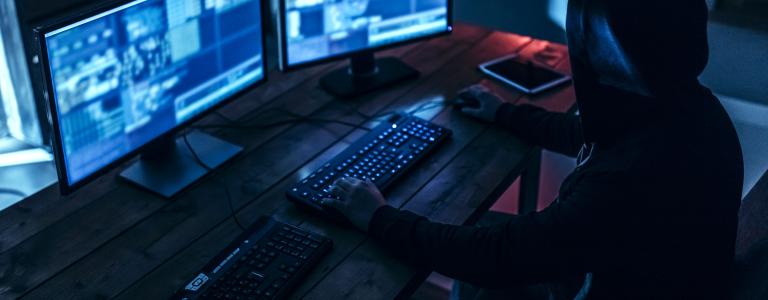For same day purchases we found that Coin.Mx offered the best solution. This allows credit card purchases up to $500 after a validation process that, as well as the usual identity checks, requires the purchaser to make a video showing their face, a government issued ID, and both sides of the credit card used to make the purchase... Coin.Mx offers a poor exchange rate and charges a hefty premium for credit card use. -- Cloudmark Security Threat Report 2015 Q1Since then Coin.Mx has closed down, and the principals have been found guilty of various banking fraud and conspiracy charges. It seems that even purchasing Bitcoin exposes the victim to risk of identity theft and fraud, as Bitcoin exchanges are not regulated by any government or agency. In August 2015 the source code for a ransomware attack was published on Github by security researcher Utku Sen. To avoid real world exploitation, he inserted several security flaws and backdoors in the original code. Though Sen has since abandoned the project and deleted the code from Github, it is still available on the Internet with a little searching. In spite of the flaws and backdoors, it does help to spread the expertise necessary to create ransomware. Such is the ease of creating ransomware these days that some authors have given up on the idea of using it themselves and instead are selling copies for a few hundred dollars each (about the money made by one successful attack). Brian Krebs recently reported on one such product, which has a marketing video showing all the easy to use point-and-click features. Instead of a few widespread ransomware campaigns we are now seeing a large number of independent operators running variations on a number of different code bases. Like bank phishing, it has become a cottage industry with low barriers to entry. These sorts of attacks are hard to stamp out, as there is no single point that can be neutralized, as there was in the large scale CryptoLocker attack. The best way to deal with ransomware attacks in the long run is to make them uneconomic by not paying ransom. San Francisco's Municipal Transportation Agency was hit by a major ransomware attack in November 2016 which took down their fare gates, but after running the system without charging riders for a few hours, they were able to fully restore their system from backups, without paying anything to the criminals. Making sure that your data is backed up is the best way to make sure that you are never faced with catastrophic data loss through ransomware, theft, hardware failure, or accidental deletion.
Mobile Messaging Security
Protect mobile messaging from evolving threats with leading, real-time, automated, and predictive mobile security products.
Email Messaging Security
Protect email messaging from evolving threats with the leader in real-time, automated, and predictive email security products.
Threat Insight
Enable security services with threat intelligence and data from the Cloudmark Global Threat Network.
The most complete, comprehensive and accurate Mobile Messaging defense solution
Industry leading predictive, machine learning technology combined with the world's largest mobile messaging threat analysis system.
Learn MoreMobile Operators
Secure Your Mobile Messaging Environment
Cloudmark mobile solutions deliver the fastest and most accurate response to protect your mobile network.
Protect Your Traffic with a Cloud Service
Utilize a cloud-based, fully managed security service to protect your network and subscribers from phishing/smishing, spam, and viruses.
Monetize Traffic by Identifying and Preventing Grey Route Abuse
Protect and increase revenues by monetizing "grey route" traffic and application to person (A2P) messaging.
Secure Your RCS and Future Mobile Messaging Traffic
Protect mobile-based Rich Communications Services (RCS) and revenues against phishing/smishing, spam, and viruses.
Secure Your Email to Mobile Messaging
Enable industry's best protection for email to mobile messaging services.
Internet Service Providers (ISPs)
Secure Your Email Environment On-Premises
Utilize the most comprehensive suite of tools and capabilities leveraging the Cloudmark Global Threat Network to protect your customers.
Secure Your Email Environment Cloud Version
Utilize a cloud-based service, best-in-class Cloudmark Global Threat Network, and fully managed SOC to protect your customers from spam, phishing, and viruses.
Provide Real-time (best-in-class) Threat Insight through Scanning and Analysis
Utilize automated, machine learning and the best-in-class Cloudmark Global Threat Network to accurately rate senders and content.
Provide a Better Email Experience to Your Customers
Delight your customers by providing a high-performance, sorted mailbox experience.
